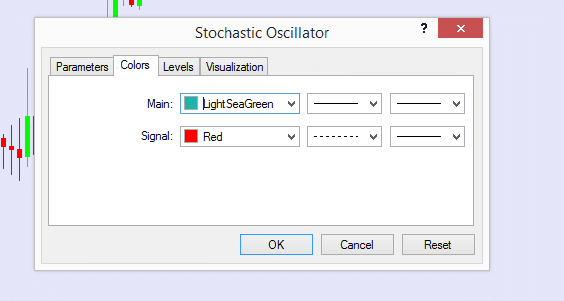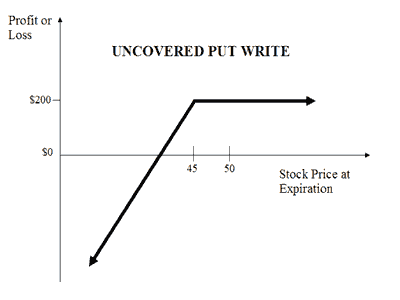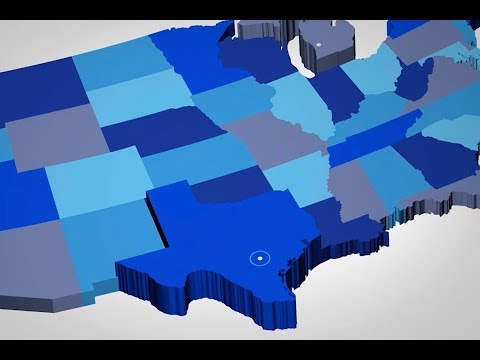Contents:
A bank statement is often used by parties outside of a company to gauge the company’s health. A balance sheet explains the financial position of a company at a specific point in time. As opposed to an income statement which reports financial information over a period of time, a balance sheet is used to determine the health of a company on a specific day. When analyzed over time or comparatively against competing companies, managers can better understand ways to improve the financial health of a company. As noted above, you can find information about assets, liabilities, and shareholder equity on a company’s balance sheet. If they don’t balance, there may be some problems, including incorrect or misplaced data, inventory or exchange rate errors, or miscalculations.
These signify where the money came from, where it went, and who owes it to the business. As an investor, you are likely most concerned with profitability ; liquidity ; and solvency (how a company can pay its long-term debts). Accounts payable is also called as bills payable and the total amount that a company is liable to pay is shown as liability under the head ‘sundry creditor’ in the balance sheet. While managing a business, a close watch on the cash flow is crucial and it is obvious.
Cash is a vital asset shown in the balance sheet that can be further analyzed through details in the cash flow statement. Cash and other liquid assets indicate the ability to pay bills and service debt when due and remain a viable going concern. Besides these three core financial statements, companies may present a detailed Statement of Retained Earnings for the accounting period and a detailed Statement of Accumulated Other Comprehensive Income . The expanded accounting equation goes hand in hand with the balance sheet; hence, it is why the fundamental accounting equation is also called the balance sheet equation.
- In the next accounting cycle, the RE ending balance from the previous accounting period will now become the retained earnings beginning balance.
- The double-entry practice ensures that the accounting equation always remains balanced, meaning that the left side value of the equation will always match the right side value.
- The fundamental part of accounting and the most basic equation in accounting is the Balance Sheet Equation.
- Liabilities are financial and legal obligations to pay an amount of money to a debtor, which is why they’re typically tallied as negatives (-) in a balance sheet.
- Fixed assets include land, machinery, equipment, buildings, and other durable, generally capital-intensive assets.
- Balance sheet is used by various stakeholders like management, employees, investors, creditors, banks, regulatory authorities, tax authorities etc.
It breaks down net income and the transactions related to the owners (dividends, etc.). A general ledger is a record-keeping system for a company’s financial data, with debit and credit account records validated by a trial balance. Double entry is an accounting term stating that every financial transaction has equal and opposite effects in at least two different accounts. The accounting equation is a concise expression of the complex, expanded, and multi-item display of a balance sheet. If a company or organization is privately held by a single owner, then shareholders’ equity will generally be pretty straightforward. If it’s publicly held, this calculation may become more complicated depending on the various types of stock issued.
For example, accounts receivable must be continually assessed for impairment and adjusted to reflect potential uncollectible accounts. Without knowing which receivables a company is likely to actually receive, a company must make estimates and reflect their best guess as part of the balance sheet. Retained earnings are the net earnings a company either reinvests in the business or uses to pay off debt.
Accounts receivable refers to the amount that a company is entitled to receive from its customers for goods or services sold on credit. In other words, it is the amount that your customer owes you in respect of contractual obligations. Accounts receivables are also known as debtor, trade debtors, bills receivable or trade receivables. We also allow you to split your payment across 2 separate credit card transactions or send a payment link email to another person on your behalf. If splitting your payment into 2 transactions, a minimum payment of $350 is required for the first transaction. We accept payments via credit card, wire transfer, Western Union, and bank loan.
Furthermore, the number of transactions entered as the debits must be equivalent to that of the credits. Total-debt-to-total-assets is a leverage ratio that shows the total amount of debt a company has relative to its assets. Depending on the company, different parties may be responsible for preparing the balance sheet. For small privately-held businesses, the balance sheet might be prepared by the owner or by a company bookkeeper. For mid-size private firms, they might be prepared internally and then looked over by an external accountant. The image below is an example of a comparative balance sheet of Apple, Inc.
What is a Balance Sheet? Definition, Formula & Examples
Efficiency – By using the income statement in connection with the balance sheet, it’s possible to assess how efficiently a company uses its assets. For example, dividing revenue by the average total assets produces the Asset Turnover Ratio to indicate how efficiently the company turns assets into revenue. Additionally, the working capital cycle shows how well a company manages its cash in the short term.
Retained earnings represent a useful link between the income statement and the balance sheet, as they are recorded under shareholders’ equity, which connects the two statements. This reinvestment into the company aims to achieve even more earnings in the future. Balance sheet under the shareholder’s equity section at the end of each accounting period. To calculate RE, the beginning RE balance is added to the net income or reduced by a net loss and then dividend payouts are subtracted.
Balance Sheet Formula
Solvency ratios are used to figure out how well a company is positioned to pay off its debts. The current and quick ratios can be used for liquidity and solvency tests. Cash and convertible investments are compared to current liabilities; they show how soon debts can be paid with either or both. The balance sheet and the income sheet are used to determine many of the ratios used to analyze the balance sheet. For some of the ratios, you can use the information on just the balance sheet.
This statement reflects profits and losses that are themselves determined by the calculations that make up the basic accounting equation. In other words, this equation allows businesses to determine revenue as well as prepare a statement of retained earnings. This then allows them to predict future profit trends and adjust business practices accordingly. Thus, the accounting equation is an essential step in determining company profitability. A company’s quarterly and annual reports are basically derived directly from the accounting equations used in bookkeeping practices. These equations, entered in a business’s general ledger, will provide the material that eventually makes up the foundation of a business’s financial statements.
Shareholders’ equity refers generally to the net worth of a company, and reflects the amount of money that would be left over if all assets were sold and liabilities paid. Shareholders’ equity belongs to the shareholders, whether they be private or public owners. Have you found yourself in the position of needing to prepare a balance sheet?
Summary Comparison of the Three Financial Statements
It can be sold at a later date to raise cash or reserved to repel a hostile takeover. Dividends payable is dividends that have been authorized for payment but have not yet been issued. Customer prepayments is money received by a customer before the service has been provided or product delivered. The company has an obligation to provide that good or service or return the customer’s money. Wages payable is salaries, wages, and benefits to employees, often for the most recent pay period.
Assessing your farm’s financial health using your balance sheet – Farm and Dairy
Assessing your farm’s financial health using your balance sheet.
Posted: Thu, 09 Feb 2023 08:00:00 GMT [source]
Suppose a proprietor company has a liability of $1500, and owner equity is $2000. Calculation of Balance sheet, i.e., Total asset of a company will sum of liability and equity. Cash monitoring is needed by both individuals and businesses for financial stability.
Owners’ Equity
Below are some examples of transactions and how they affect the accounting equation. Accounts payable is debt obligations on invoices processed as part of the operation of a business that are often due within 30 days of receipt. This line item includes all of the company’s intangible fixed assets, which may or may not be identifiable. Identifiable intangible assets include patents, licenses, and secret formulas.
AOCI includes unrealized gains or losses from holding available-for-sale debt securities investments, foreign currency translation gains or losses, and certain pension gains or losses. If a business buys raw materials and pays in cash, it will result in an increase in the company’s inventory while reducing cash capital . Because there are two or more accounts affected by every transaction carried out by a company, the accounting system is referred to as double-entry accounting. The shareholders’ equity number is a company’s total assets minus its total liabilities. While an asset is something a company owns, a liability is something it owes.
It’s a snapshot of a company’s financial position, as broken down into assets, liabilities, and equity. Balance sheets serve two very different purposes depending on the audience reviewing them. In this form, it is easier to highlight the relationship between shareholder’s equity and debt . As you can see, shareholder’s equity is the remainder after liabilities have been subtracted from assets. This is because creditors – parties that lend money such as banks – have the first claim to a company’s assets.
Barbara is currently a financial writer working with successful B2B businesses, including SaaS companies. She is a former CFO for fast-growing tech companies and has Deloitte audit experience. Barbara has an MBA degree from The University of Texas and an active CPA license. When she’s not writing, Barbara likes to research public companies and play social games including Texas hold ‘em poker, bridge, and Mah Jongg. Net worth is the value of the assets a person or corporation owns, minus the liabilities they owe. Total all liabilities, which should be a separate listing on the balance sheet.
What Is the Accounting Equation, and How Do You Calculate It? – Investopedia
What Is the Accounting Equation, and How Do You Calculate It?.
Posted: Sun, 26 Mar 2017 00:30:41 GMT [source]
Deferred revenue represents cash received from customers as deposits before goods are shipped or services are performed. Deferred revenue is a liability because the company still has a performance obligation. Dividends are the earnings that are distributed to stockholders of the company. From there, gross profit is impacted by other operating expenses and income, depending on the nature of the business, to reachnet income at the bottom — “the bottom line” for the business.
- The revenues and expenses show the change in net income from period to period.
- Thus, the accounting formula essentially shows that what the firm owns has been purchased with equity and/or liabilities.
- These three core statements are intricately linked to each other and this guide will explain how they all fit together.
- The balance sheet shows a company’s assets, liabilities and shareholders’ equity at a particular point in time.
- Some liabilities are considered off the balance sheet, meaning they do not appear on the balance sheet.
- It is used to transfer totals from books of prime entry into the nominal ledger.
The three main balance sheet equation or sections of a balance sheet are assets, liabilities, and shareholders’ equity. A multi step balance sheet classifies business assets and liabilities as current or long-term . Since the balance sheet is founded on the principles of the accounting equation, this equation can also be said to be responsible for estimating the net worth of an entire company. The fundamental components of the accounting equation include the calculation of both company holdings and company debts; thus, it allows owners to gauge the total value of a firm’s assets. Investors and analysts alike use balance sheet formulas to gain insight about a company’s finances.
The remaining amount is distributed to shareholders in the form of dividends. A liability is any money that a company owes to outside parties, from bills it has to pay to suppliers to interest on bonds issued to creditors to rent, utilities and salaries. Current liabilities are due within one year and are listed in order of their due date. Long-term liabilities, on the other hand, are due at any point after one year. Intangible assets include non-physical assets such as intellectual property and goodwill. These assets are generally only listed on the balance sheet if they are acquired, rather than developed in-house.





